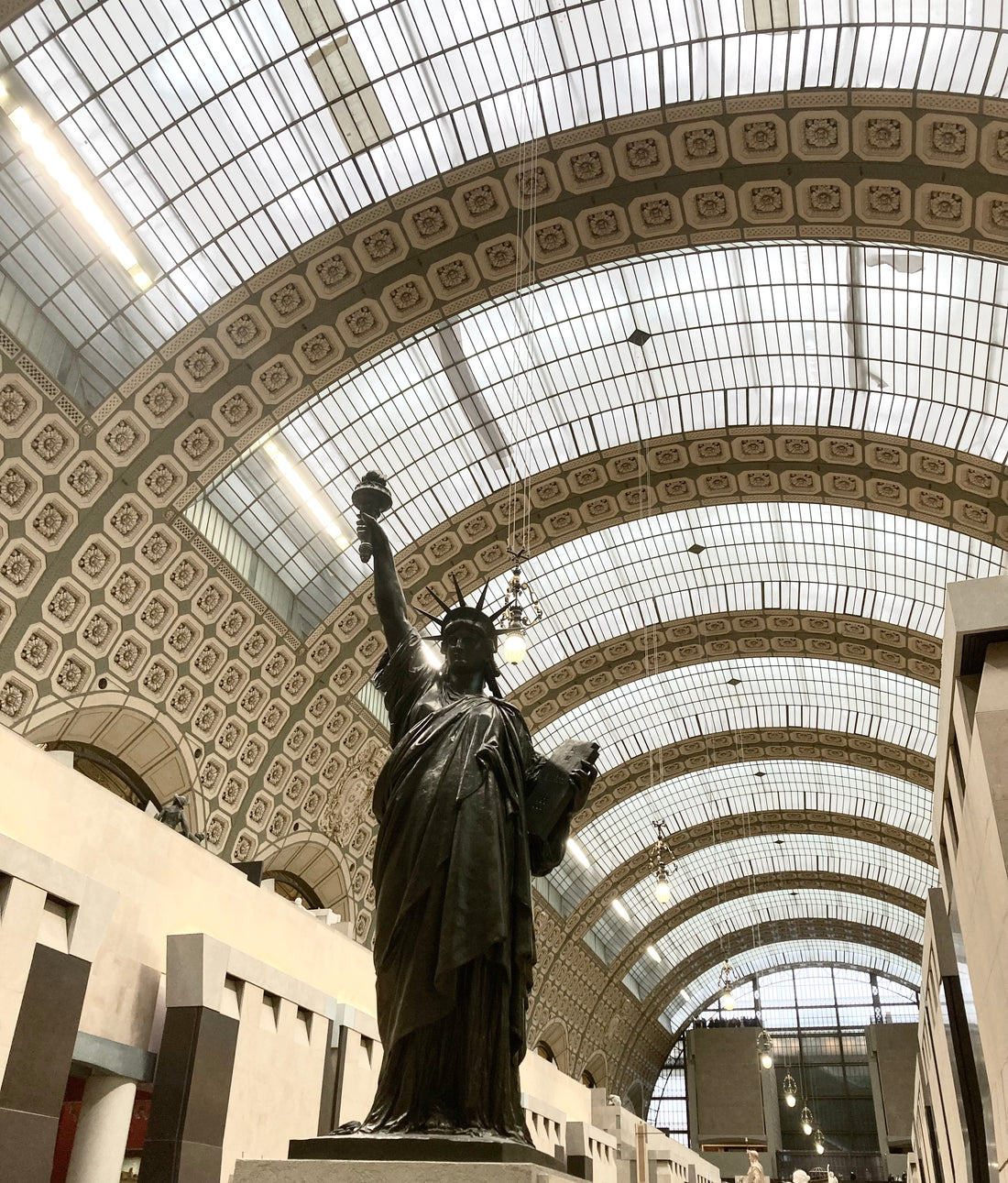
The Musée d'Orsay and Vincent van Gogh
Share
The museum I would place at the top of my list in Paris would undoubtedly be the Musée d'Orsay. As a Van Gogh lover, I'm not sure if I'm impartial in this choice, but the architecture and the spacious area that greets you with its artworks as soon as you enter are among the main reasons influencing my decision.
Located along the Seine River in Paris, the Musée d'Orsay is a world-renowned museum known for its impressive collection of impressionist and post-impressionist art. Originally a beautiful railway station built in the Beaux-Arts style, it was transformed into a museum in 1986. Among its many treasures, the Van Gogh Gallery is a major highlight, attracting art lovers from all over the world to see the works of Vincent van Gogh.
From Train Station to Museum
The building that houses the Musée d'Orsay was once the Gare d'Orsay, a train station built for the 1900 Exposition Universelle. By the 1970s, the station was no longer in use and faced the possibility of being demolished. Instead, the French government decided to convert it into a museum. Architects Pierre Colboc, Renaud Bardon, and Jean-Paul Philippon redesigned the space, keeping its original charm while creating a vibrant home for art.

A Treasure Trove of Art
The Musée d'Orsay boasts a vast collection that spans several key art movements. It is particularly famous for its holdings of impressionist and post-impressionist paintings. The museum's galleries feature works by some of the most celebrated artists in history, including Claude Monet, Pierre-Auguste Renoir, Edgar Degas, and Vincent van Gogh. In addition to paintings, the Musée d'Orsay features an array of sculptures by artists like Auguste Rodin and decorative art pieces from the art nouveau period.
The Van Gogh Gallery
Vincent van Gogh, known for his passionate and expressive art, has a special place in the Musée d'Orsay. The Van Gogh Gallery lets visitors explore his creative mind and emotional world through some of his most famous works. Especially this section is likely to be quite crowded if you visit the museum on weekends.
-
"Starry Night Over the Rhône" (1888): This painting shows the sparkling reflections of stars and lights on the Rhône River in Arles, capturing Van Gogh's fascination with the night sky.

-
"Tree Root" (27th of July 1890)
The painting is considered by some to be his last painting before his death. "My life too is attacked at the very root" he wrote on 10 July
-
"Self-Portrait" (1889): One of several self-portraits painted during his stay at the Saint-Paul-de-Mausole asylum, this work reveals Van Gogh's inner struggles and his quest for self-understanding.


Statue of Liberty
The Musée d'Orsay in Paris houses a smaller replica of the Statue of Liberty, which is one of the notable pieces in its collection. This replica was created by Frédéric-Auguste Bartholdi, the same sculptor who designed the original Statue of Liberty that stands in New York Harbor. The statue at the Musée d'Orsay was gifted to the museum in 1905.
The replica is significant as it symbolizes the strong historical and cultural ties between France and the United States. The original statue was a gift from France to the United States in 1886 to celebrate the centennial of the American Declaration of Independence and to signify the friendship between the two nations.
Architectural Marvel
The Musée d'Orsay itself is a work of art. The transformation from a train station to a museum preserved the building's stunning architectural features, including its grand clock, intricate ironwork, and expansive glass ceilings. These elements create a light-filled, airy environment that enhances the viewing experience.
After completing your tour of the museum, you'll likely feel a bit tired, just like I do. That's when the restaurant located on the top floor of the museum will come to your rescue. "Le Restaurant" situated on the first floor of the museum, this elegant dining venue offers a unique experience that blends fine dining with artistic ambiance. Originally part of the hotel that occupied the Orsay train station, the restaurant's décor retains its Belle Époque charm with opulent chandeliers, gilded ceilings, and ornate details. Le Restaurant offers a menu that features classic French cuisine with a modern twist, using fresh and seasonal ingredients. Diners can enjoy a variety of dishes, from gourmet entrées to decadent desserts, all while surrounded by the exquisite atmosphere that reflects the cultural richness of the museum itself.

Any Insider Tips?
If you want to avoid the crowds, try visiting the museum early in the morning or later in the afternoon. And don't forget to grab a coffee at the charming café inside the museum for a little pick-me-up between art exhibits. (Because caffeine and culture go hand in hand!) Due to my fondness for Van Gogh, I couldn't resist ordering the cake with his portrait on it, as not choosing it would feel like a betrayal to myself. So, I ordered it and, in homage, I ate the ear part first.


